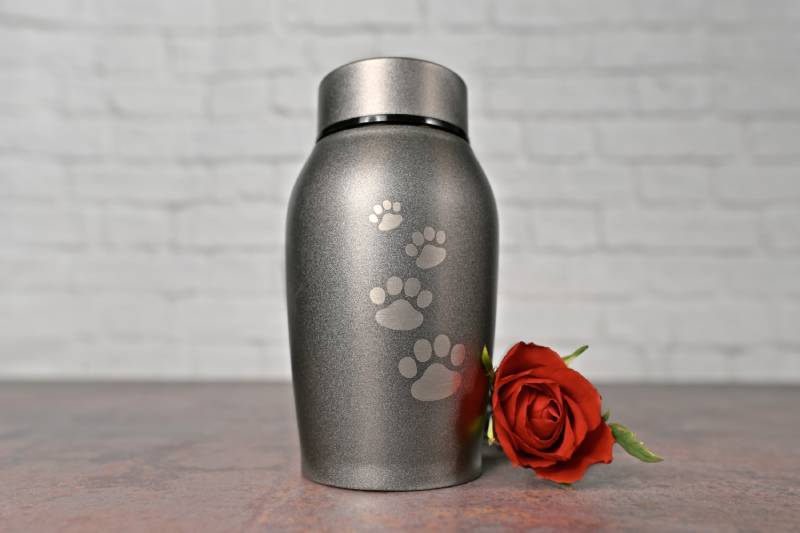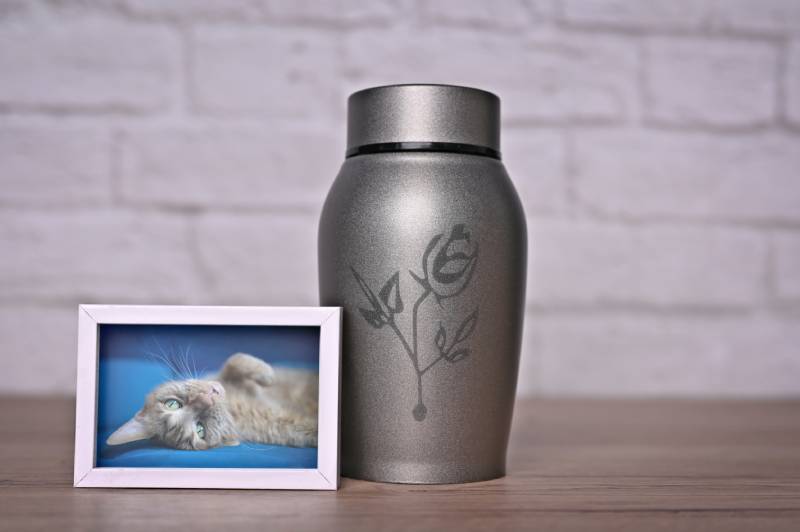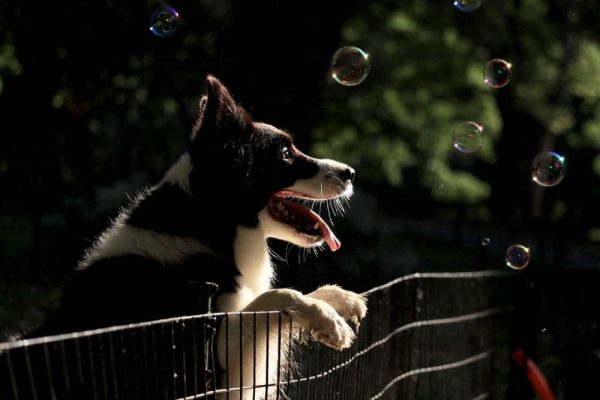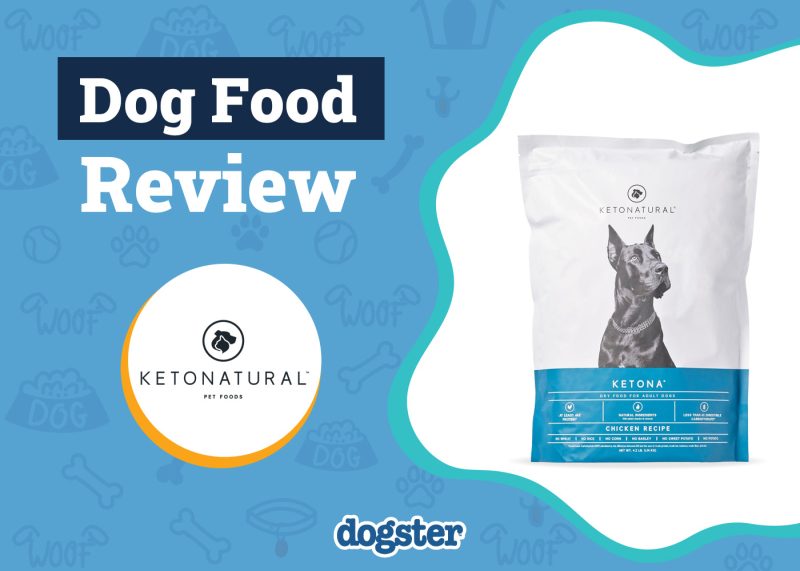In this article
View 4 More +Saying goodbye to our pets is so tremendously heartbreaking, but unfortunately, it is a part of life and something that we can’t avoid, as much as we want to.
If you’re at the point when you’re considering the best way to honor your pet when they pass, you have several options to choose from. Aquamation is an eco-friendly option that will provide you with your beloved pet’s ashes that you can use to memorialize them however you wish.
If you want to learn more about how it works, we get into the pros and cons here, along with FAQs, to hopefully help inform your decision.

How Does It Work?
- Alkaline hydrolysis
- Resomation
- Water-based cremation
- Bio-cremation
- Green cremation
- Flameless cremation
Essentially, aquamation uses a natural form of decomposition, which is sped up to break down the body, but it uses water rather than fire.
The scientific name for aquamation is alkaline hydrolysis, which is the process that bodies go through when buried in the ground. Alkalinity and temperature, in addition to water flow and pressure, are combined to accelerate the breakdown of the body. How it’s accomplished depends on the organization, but potassium hydroxide and sodium hydroxide are combined with water that’s heated to 200°F (93°C) to 320°F (160°C). The animal’s body is placed in a stainless-steel container, the water solution is circulated slowly through the container, and the soft tissues are gently dissolved.
Roughly 6 to 24 hours later, depending on the water temperature, all that’s left are soft bones, which are dried and ground down into a powdery substance, and this can be essentially treated like ashes, so they can be placed in an urn or scattered in a meaningful place.
Aquamation is also used for humans and is available across North America and the U.K. Just be sure to check your local legislation to see whether it is available and legal in your area.

How Did Aquamation Get Started?
It might surprise you to learn that in some form or other, aquamation has been around since the 1880s. It was conceived by a farmer, Amos Herbert Hanson. He used a similar process to create fertilizer made from animal carcasses. Then, during the BSE outbreak (mad cow disease) in the U.K. in the 1980s and ‘90s, aquamation was accepted as a better practice for destroying the pathogens.
In 1993, Albany Medical College in Albany, New York, installed the first commercial aquamation system, which was found to be cheaper than the standard flame cremation.

Advantages of Aquamation
1. Eco-friendly
Aquamation definitely has its advantages, with the primary reason being that it seems to be more eco-friendly, particularly compared to cremation. Cremation emits mercury and carbon monoxide into the environment, while aquamation does not release any harmful chemicals into the air.
Aquamation uses less energy than traditional cremation, yet it destroys all pathogens and toxins. Once the process is complete, the leftover fluid can safely be used as fertilizer. The entire process doesn’t harm the environment and makes a smaller carbon footprint than most other methods.

2. Gentle Process
It gives some pet owners peace of mind knowing that aquamation is a gentle and natural process and tends to produce more “ashes.” The “ash” is also not carbonized, like it is from cremation, but rather is more of a white-to-tan color and has a soft texture.
3. Cost Effective
You might expect aquamation to be a pricier method, particularly since it’s a newer process, but it’s often quite comparable to cremation and more cost-effective than traditional burial.
Disadvantages of Aquamation
1. Not Readily Available
While aquamation is gaining popularity, particularly due to Anglican Archbishop Emeritus Desmond Tutu, who requested his remains to undergo the aquamation process, it’s still relatively unknown to the general public. This can make it challenging to find a veterinary clinic that can offer this as a service.
2. Uncertain Long-Term Effects
It is still technically a new service, and there haven’t been any studies to check the long-term effects of how aquamation might affect the environment, particularly the water system.

3. Liquid Draining to Sewers
While pet owners receive the ground-up bones, the rest of the body is dissolved and often flushed into the sewer system. There are likely pet owners out there who will feel uncomfortable with the idea of part of their pet going through the sewers.
4. Concerns of Water Conservation
Overall, aquamation doesn’t use as much water as you might expect, and companies state that they only use the same amount of water that a single home does in a day. That said, roughly 1,300 liters of water are used for each use, which is still enough to cause concerns over water conservation issues.

Frequently Asked Questions (FAQ)
Are Pets Aquamated Alone or With Other Pets?
Most places offer communal and individual aquamation. The communal option is for pet parents who do not want their pet’s “ashes” returned to them. This means multiple pets will be aquamated together, which saves money.
The individual option enables the pet to undergo the process in an individual container. Some companies place an identifying item that can withstand the process, so the pet owner is assured that they receive the right remains.
Can Any Pet Be Aquamated?
Yes. Some companies will even advertise that they specialize in exotic pets. The smaller the pet, the less time and equipment are needed, which makes it a less expensive process. Everything from turtles, rats, guinea pigs, birds, bearded dragons, and snakes can all be aquamated.
How Can You Find a Place That Does Aquamation?
Your best bet is to speak to a veterinarian regarding the best aquamation companies in the area. They might already work with a facility and can fill you in on the quality of work.
Did you know you can speak to a veterinarian without having to travel? Just head over to PangoVet. It's our online service where you can talk to a vet online and get the advice you need for your pet — all at an affordable price!

What Are the Options for the “Ashes?”
You can use the “ashes” the same way that you would use the traditional cremation ashes. They can be sprinkled in your backyard, where you can create a memorial with a tree or a plant. Or you can find a place that was meaningful for you and your pet; some pet owners like to mix the ashes with soil and spread them around the base of a tree in a favorite forest.
There are lovely urns that you can keep the ashes in. These can be made with stone, clay, metal, or wood. You can consider having it engraved or your pet’s picture or portrait painted on it.
There’s also cremation jewelry, which holds a tiny bit of the ashes that you can wear, or you can have your pet memorialized in a commissioned piece of art, and you can ask to have the ashes used in the paint.
Finally, you might want to make arrangements to have your pet’s ashes combined with your own when the time comes.

Conclusion
Aquamation is still relatively unknown to the wider public, but as the concern for the environment grows, more pet owners are likely to research and opt for eco-friendly companies and processes. Aquamation is seen as more environmentally friendly compared to many other traditional services, especially if you want to avoid significantly increasing your carbon footprint.
Saying goodbye to an important member of your family is not easy. But it might bring you a bit of comfort knowing that they will be well taken care of during this gentle process.
Related Reads:
Featured Image Credit: Lightspruch, Shutterstock



















